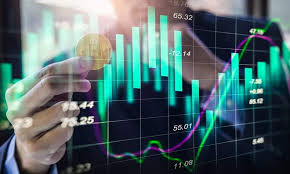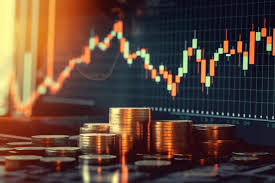Understanding the Dynamics of Trading Crypto Volume
In the world of cryptocurrency, trading volume is one of the most critical metrics that traders and investors must pay attention to. Trading crypto volume refers to the total amount of a cryptocurrency traded over a specific period, reflecting the activity and liquidity of that asset. A deeper understanding of trading volume can greatly enhance one’s strategy and decision-making in the crypto market. For a more detailed overview of this topic, you can check out this resource: Trading Crypto Volume http://www.freedomsphoenix.com/Letter?EdNo=001&Info=0457911.
What is Trading Volume?
Trading volume in cryptocurrency is a measure of how much of a particular digital asset has been traded in a given timeframe, whether measured in the number of coins or the total monetary value of those transactions. For instance, if 1,000 Bitcoin are traded in a day, the trading volume for Bitcoin that day is 1,000 BTC. It can also be expressed in terms of fiat currency to ascertain trading worth, for instance, $50 million in trades. This metric is crucial for multiple reasons, including assessing market liquidity and volatility.
Why is Trading Volume Important?
Understanding trading volume is essential for several reasons:
- Liquidity: High trading volume typically indicates greater market liquidity, meaning that traders can buy and sell assets without significantly affecting the price. This is particularly crucial in volatile markets like crypto.
- Market Sentiment: Changes in trading volume can signal changes in market sentiment. For instance, if a cryptocurrency experiences a sudden spike in volume, particularly during a price increase, it may indicate strong buying interest. Conversely, a spike in volume accompanied by falling prices can signal panic selling.
- Confirmation of Trends: Analysts often use trading volume to confirm price trends. An increase in price accompanied by increasing volume can suggest that the trend is strong and likely to continue, while a price increase on declining volume might indicate a potential reversal.
How to Analyze Crypto Trading Volume?
Analyzing trading volume effectively requires understanding how to interpret various volume indicators. Here are a few methods:
1. Volume Indicators
Various technical indicators utilize trading volume to generate insights:
- On-Balance Volume (OBV): This indicator calculates a cumulative volume flow to measure buying and selling pressure. A rising OBV indicates that buying pressure is surpassing selling pressure.
- Accumulation/Distribution Line: This indicator combines price and volume to show how much of a cryptocurrency is being accumulated or distributed. A rising line indicates accumulation, while a falling line suggests distribution.
- Chaikin Money Flow (CMF): This is a volume-weighted average of accumulation and distribution over a specified period. A positive CMF suggests that money is flowing into the asset, while a negative CMF indicates outflows.
2. Correlating Volume with Price Movements
Observing how trading volume correlates with price movements can provide deeper insights:
- Breakouts: A price breakout accompanied by high volume typically suggests a strong move, while a breakout on low volume might be deemed weak and unsustainable.
- Reversals: A price reversal accompanied by a significant increase in volume can indicate a stronger signal, potentially confirming a market turnaround.
Challenges in Interpreting Volume Data
Despite its significance, interpreting trading volume data can be challenging due to:
- Wash Trading: Some exchanges may engage in wash trading, a practice where traders buy and sell an asset to manipulate its volume. This can create misleading signals.
- Diverse Trading Platforms: With multiple exchanges available for trading cryptocurrencies, volume data can vary significantly. Traders should consider using volume-weighted average prices (VWAP) to get a comprehensive view.
Strategies Incorporating Trading Volume
Incorporating trading volume into your investment or trading strategy can lead to better decision-making:
- Volume-Weighted Average Price (VWAP): This indicator helps traders identify the average price during a specific timeframe, adjusted for volume. It can serve as a benchmark for making buy or sell decisions.
- Position Sizing: Use trading volume to help determine appropriate position sizes relative to market activity, especially in volatile instruments.
The Future of Trading Volume Analysis
As the cryptocurrency market continues to evolve, the methods and technologies used to analyze trading volume will also advance. Increasingly sophisticated algorithms and AI-powered trading systems will likely incorporate volume analysis alongside other data points for improved predictions and trading efficacy. Moreover, regulatory changes may influence volume transparency, making it easier for traders to trust the data they are analyzing.
Conclusion
Trading crypto volume is a fundamental aspect of market analysis that every trader should consider. By understanding and analyzing trading volume effectively, traders can make more informed decisions, identify market trends, and navigate the increasingly complex crypto landscape. Remember, volume is not just a number; it’s a reflection of market sentiment and activity that can provide insight into potential future price movements. By incorporating volume analysis into your trading strategies, you can enhance your potential for success in the crypto markets.



